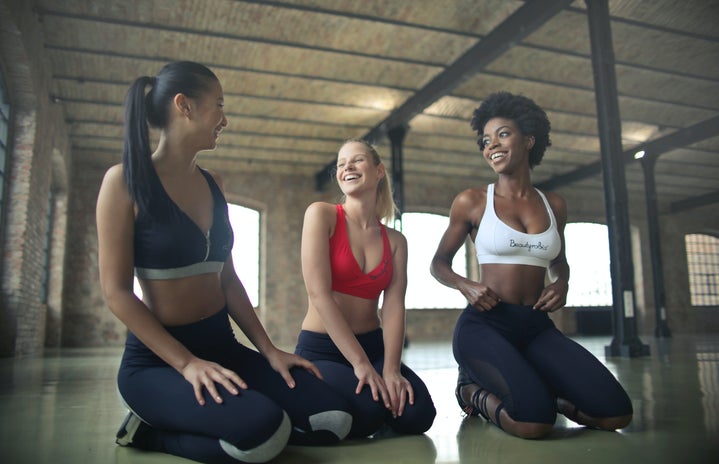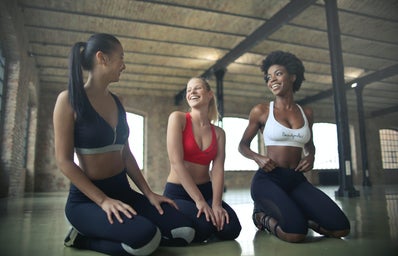Today, there is an apparent shift in the beauty industry to create natural products. As the beauty and wellness category begin to coalesce, consumers are becoming more conscious of not only what they are putting in their body, but also what they are putting on their body. When looking for a new product, it can be intimidating to examine the ingredient list and not know what a single word means. You may be wondering what exactly is the Alpha hydroxy acids, better known as AHA’s, and are they good for me? While AHA’s are a form of natural acids that exfoliate the surface of the skin, other ingredients are not as good for you. The largest organ in the human body is the skin, and the products you use goes directly into your bloodstream. In other words, what moisturizers you use matters. The preoccupation with living a healthy and holistic lifestyle is translating into the beauty industry. Consumers are demanding more diverse products, and this can be seen reflected in the movement of natural beauty products brought to market.
In May of 2018, Sephora launched their “Clean at Sephora” seal. According to Sephora’s website, products deemed “clean” are those formulated without “sulfates SLS and SLES, parabens, formaldehyde, formaldehyde-releasing agents, phthalates, mineral oil, retinyl palmitate, oxybenzone, coal tar, hydroquinone, triclosan, triclocarban.” The creation of this category was due to the research Sephora conducted and their findings that “more than 60% of women read beauty product labels before purchase, and that 54% claim it’s important for their skincare products to have a point of view on clean,” Sephora’s Chief Marketing Officer Artemis Patrick said via Teen Vogue. In a digital landscape swarming with advertisements of new products that promise a quick fix to your beauty woes, what does it mean to purchase a beauty product that is clean, and frankly, why should it matter?
Businesses such as The Environmental Working Group, also known as EWG, are helping to educate consumers. They launched their Skin Deep database for cosmetics and personal care in 2004. With a group of scientists on their team, EWG compares ingredients found in beauty product labels to information in nearly sixty toxicity and regulatory databases. Using this data, they demystify the level of toxicity and degree of hazard associated with common ingredients found in personal care products such as Sodium Laureth Sulfate, Parabens, and Formaldehyde. The ingredient, Sodium Laureth Sulfate, commonly known as SLS, is used as an emulsifier to reduce the surface tension between two liquids. On EWG’s website, SLS has a score of three, which means it is moderately hazardous as it can irritate the skin. Now more so than ever, when consumers are shopping for a clean product, most people want “paraben free.” There are a variety of parabens that reside with the paraben family, but the most common parabens are methylparaben, propylparaben, and ethylparaben. Methylparaben is a preservative that “mimics estrogen and can act as a potential hormone (endocrine) system disruptors,” EWG scientists state. While Methylparaben and ethylparaben have a hazardous score of four, propylparabens have a score of seven, which means it is highly hazardous to one’s health due to their endocrine disruption and reproductive toxicity. Lastly, EWG claims formaldehyde has the highest score of ten and is deemed “highly hazardous” as it is a “carcinogenic impurity released by many cosmetic preservatives” namely found in nail polish.
These harmful chemicals are found in plenty of personal products on the market. Amongst shoppers, there is a pervasive belief that purchasing clean beauty products means they lack efficacy. According to Doctor Nava Dayan, this common misconception may be due in part to the fact that the “industry tends to use non-standardized ingredients at noneffective levels.” Doctor Dayan goes on to state if a product contains active ingredients at a high percentage then “there is no reason for it to be less effective when compared to a synthetic compound.” As companies realize consumers are negating misconceptions about clean products and are willing to prioritize products with natural ingredients, exciting brands like Drunk Elephant, Youth To The People, Farmacy, and Indie Lee are becoming more prominent. As the line between beauty and wellness begins to blur, the conversation surrounding natural, clean, and organic products has become more prominent. While a shift in the industry was necessary, not every brand is rising to meet the challenge to curate an assortment of products that are free of synthetic ingredients. Next time you are in the market for a new beauty product, take a moment to read the ingredient’s list and determine if you truly know what you are putting on your body.
Sources:
Dayan, Dr. Nava. “Evaluating the Efficacy of Natural Cosmetics.” Happi, 1 Nov. 2017, www.happi.com/issues/2017-11-01/view_claims-substantiation/evaluating-th….
EWG’s Skin Deep Cosmetics Database. www.ewg.org/ewgverified/index.php.
Hubbard, Lauren. “Sephora Launches Clean at Sephora Beauty Shopping Category.” Teen Vogue, 11 May 2018, www.teenvogue.com/story/clean-at-sephora-shopping-category.
Sephora. www.sephora.com/clean-beauty-products.



